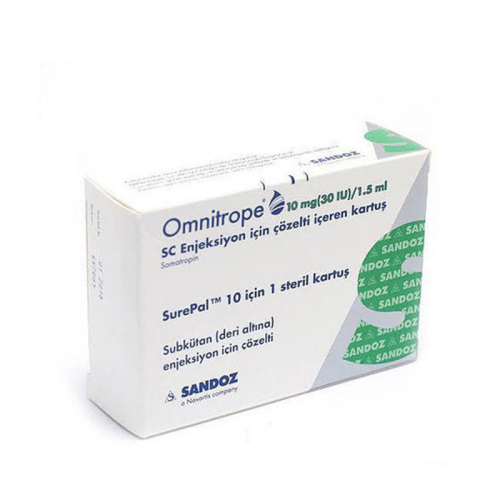Omnitrope 10MG (30IU)
- Brand: Sandoz
- Product Code: Omnitrope 10MG (30IU)
- Availability: In Stock
-
$288.00
ACTIVE HALF-LIFE
2.5-3 hours
CLASSIFICATION
Peptide Hormone
DOSAGE
Men 4-10 IU/day
ACNE
No
WATER RETENTION
No
HBR
No
HEPATOTOXICITY
No
AROMATIZATION
No
MANUFACTURER
Sandoz
WAREHOUSE
International Warehouse 2
SUBSTANCE
Somatropine - 191 Amino Acid
,
Human Growth Hormone (HGH), also referred to as somatotropin or somatropin, is a peptide hormone that promotes growth, cellular reproduction, and regeneration in humans and other species. This hormone acts as a mitogen, specifically influencing certain types of cells. HGH consists of a single-chain polypeptide made up of 191 amino acids and is produced, stored, and released by somatotropic cells located in the lateral wings of the anterior pituitary gland. The secretion of HGH is affected by various factors, including diet and physical activity.
HGH encourages body cells to grow larger and to divide more quickly than normal. It also facilitates the transport of amino acids across cell membranes and accelerates the conversion of these amino acids into proteins, resulting in an anabolic (muscle-building) effect. Additionally, HGH can reduce the typical rate at which cells metabolize carbohydrates while enhancing the utilization of fats. Research indicates that fat reduction and an increase in lean mass can occur with daily doses as low as 0.028 iu/kg over 24 weeks. HGH also stimulates the production of IGF-1.
In medicine, HGH is utilized to treat growth disorders in children and hormone deficiencies in adults. Research has consistently shown several benefits of regulating HGH levels, including:
Several studies, primarily focused on individuals with HGH deficiency, have highlighted its significant impact on mental and emotional health, as well as energy levels. Those with HGH deficiencies often experience higher rates of depression.
Research has also investigated HGH's effects on cognitive functions such as learning and memory, suggesting that it may enhance cognitive capabilities and could be beneficial for individuals with cognitive impairments due to HGH deficiency.
Since at least 1982, HGH has been misused by athletes in sports. It is known for producing significant muscle mass and weight gains, though it is not particularly effective for increasing strength. Competitors in the 1970s and especially in the 1980s began to develop a more sculpted physique reminiscent of classical statues, often without increasing their cardiovascular workouts or protein intake.
HGH appears to have a more pronounced effect and positive outcomes when used in combination with steroids rather than on its own. Thus, it is often regarded as suitable for cutting cycles aimed at achieving lean muscle and fat loss.

